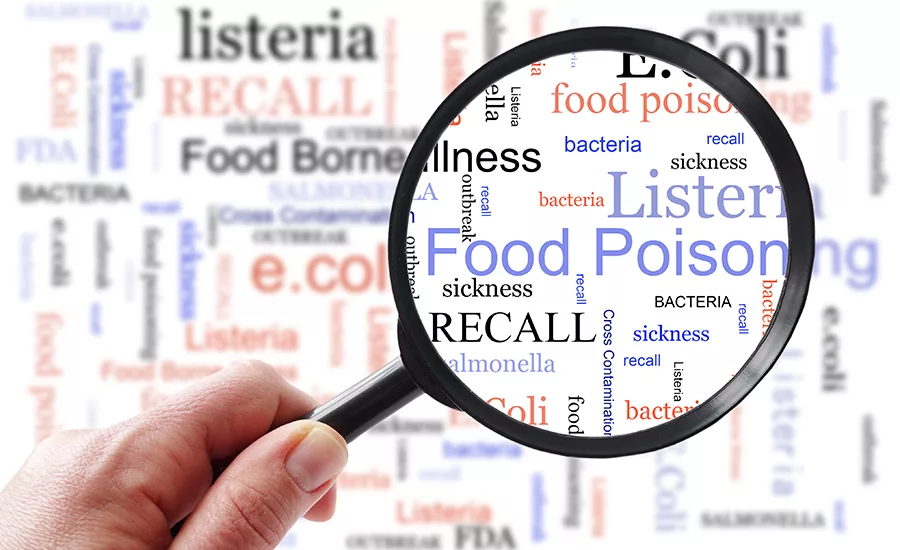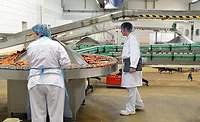Food Safety
10 potential food safety challenges from imported ingredients

With the passage of the FSMA and regulations to enforce the law, the U.S. FDA has taken steps to help secure the safety of imported foods. Photo courtesy of Getty Images/zimmytws
The United States government has taken many steps to ensure the safety of imported foods and ingredients. For example, the USDA (U.S. Department of Agriculture) has programs to verify that processors wishing to ship meat, poultry or egg products to the States have food safety programs that are equivalent to those in the United States.
With the passage of the Food Safety Modernization Act (FSMA) and regulations to enforce the law, the U.S. Food and Drug Administration has taken steps to help secure the safety of imported foods, like the Foreign Supplier Verification Program (FSVP) to ensure that foods exported to the U.S. are safe.
I have visited food and ingredient manufacturers on six continents and observed a few practices that surprised me and affected how I look at other operations, so I know the regulations in place in the States are there for a reason. Here are 10 of my observations from abroad, and while these conditions may not be widespread in plants overseas, they’re food for thought when considering partner suppliers for imported ingredients.
1. Record keeping
Records are a key element toward ensuring food processors follow procedures. They also verify that the work has been done properly. However, records may be misleading and there are cases where what is on paper or recorded to a database may not be true. In other words, the records have been falsified. One example I observed occurred in a low-acid food processor. The plant did not prepare process records while the retorts were operating. The quality staff would remove the recorder charts at the end of the workday and fill in the process records. Those records actually need to be filled out in real time, not at the end of the workday. One should not only view records when visiting a plant, but watch the operators as they are recording the data. If records look too perfect, it should raise a red flag.
2. Foreign matter detection
Metal detection may be deemed a critical control point (CCP) to ensure foods are safe or be treated as a quality issue. It is imperative that these units be properly calibrated and verified on a regular schedule using known standards, and records of these actions maintained. Most operations use ferrous, non-ferrous and stainless-steel standards, and the size varies with the operation. Inspectors should review these records and observe operations to ensure that the units are not only verified according to documented schedules, but that the units operate properly.
I planned to watch these operations in one plant whose procedures said that the units would be verified on an hourly basis. I watched product go through the detector for over an hour with no tests done. One of the people on my team decided to throw his keys onto the belt. Surprise! The keys were not kicked out. This was repeated several times with the same result. The plant managers put their heads together and told us this was because the system had not been calibrated for such a piece of metal. Instead, it was calibrated for high levels of soy sauce in the product. To top it off, when records for that line were reviewed the next day, they indicated the metal detectors had been tested every hour on the hour, which didn’t happen.
3. Inappropriate uniforms
It is the responsibility of food processors to ensure that their workers wear clothing that will protect them and will not create a situation where foods, beverages or ingredients become contaminated. Hair restraints are one requirement of all food processing facilities. It is surprising how often this simple article is not worn properly, and at times, not worn at all. I have photographs of workers without hair restraints standing under signage that clearly states that hair nets are mandatory. Safety must also be part of the clothing equation, yet in some places it is ignored. Safety shoes or boots would seem a must, yet there are plants I’ve seen where workers wear sandals. The management response was that boots are uncomfortable and workers don’t want to wear them.
4. Plant accessibility
Food plants should not be easily accessible to the public, since food safety is an essential element of the food defense program, and lack of accessibility helps maintain consistent food quality. However, I have been in plants where people wandered through the front gate to deliver meals to their family member working at the plant. I observed this several times in developing countries. When this issue was pointed out to management, they felt it was not a problem.
5. Pest management
Pest management is one of the foundational programs for food safety. This can be found in the Codex Food Hygiene document, ISO’s Technical Standard TS 22002-1 and food safety regulations around the globe. Yet, there are many places in the world where pest control seems to be an afterthought. Rather than establishing programs that incorporate the principles of Integrated Pest Management (IPM), some processors are sprayers and trappers. The programs to discourage access and eliminate food sources and harborage sites are non-existent, but one might see trays of poison located within the processing facility to kill flies, for example. In other parts of the world, pest management programs must focus on more than rodents, insects and birds. There are places where lizards, monkeys, snakes and other creatures need to be part of a facility’s pest management program.
6. Handwashing
Handwashing is also a concern with many overseas facilities, particularly in developing nations. Of course, handwashing is universal. Some processors simply do not install enough handwashing stations at plant entrances and on the processing floor to ensure workers not only wash their hands at the start of work, but that they can clean up if they dirty their hands during the work day. Many processors also fail to keep the handwashing stations properly supplied with warm water (a big problem), soap and a means to dry their hands.
7. Product adulteration
Product adulteration has been an unfortunate problem over the years. More than 15 years ago, there was a global recall of products that utilized capsicums that were adulterated with the red dye Sudan IV. This is an illegal food additive, yet continues to end up in the food supply. Another adulterant that ended up in both pet foods and human foods was melamine. Adding this compound to dairy ingredients boosts Kjeldahl nitrogen, but is harmful to animals and people. In China, dairy ingredients that were adulterated with melamine were used in infant formula resulting in the sickening of thousands of children and several deaths. These kinds of issues should force suppliers and buyers to establish programs ensuring product adulterants are not present.
8. Lot coding
Another concern is properly coding all lots. I was in a low-acid canner years ago and observed that the lot code embossed on lids loaded into the seamer did not match the actual day. When I alerted the processor, they said this was perfectly acceptable, since they were simply filling an order. It turned out that a client in Europe wanted 20,000 cases of product from one lot only. Well, the canner ran 13,000 cases with the day code and 7,000 more with the same day code a week later. Do we see a problem here? This makes proper traceability impossible.
9. Resource use
It is rather sad to observe how often processors simply don’t understand basic food microbiology. I was once in a plant making vinegar from ethanol, and a company representative proudly told me they were testing vinegar for coliforms, E. coli, salmonella and other organisms. I asked them if they ever had any positives. The answer was no. The testing they were doing was apparently a government requirement. Vinegar has often been used as a sanitizer so mandating such testing is both a waste of time and money. The plant was provided with a series of references they could utilize to end this practice, and they’re not the only ones wasting resources on unnecessary testing.
10. Self-auditing operations
The last concern relates to certain governments and how they manage food safety. There are places in the world where the government sets standards and mandates procedures, and then train processors on said protocols to audit the processing facilities in-house. No one can be comfortable with such an operation. It is a basic food safety requirement that one should never audit their own operation—audits should be conducted by a third-party.
These 10 observations are not confined solely to overseas operations. Such issues can happen anywhere—including the U.S.—especially with startup companies who don’t yet have a strong technical staff. I have shared these thoughts to give operators an idea about what might happen with any facility from which buyers obtain foods or ingredients.
Looking for a reprint of this article?
From high-res PDFs to custom plaques, order your copy today!






